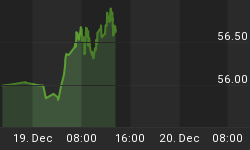When a few years ago media began calling data the new oil, it was because some pretty direct parallels could be drawn between Big Oil and Big Tech. These parallels had to do with the increasingly enormous size and influence of the companies, and the controversial nature of their business. In the post-2014 world, however, digital technology and Big Oil have teamed up to bring in the era of the digital oilfield, which just a couple of decades ago must have sounded like science fiction.
Earlier this month, Schlumberger announced it had struck a partnership with Rockwell Automation, a company specializing in automation solutions for industrial applications. The two, Schlumberger said, had set up the first fully integrated digital oilfield automation solutions provider.
The company is called Sensia and will provide “measurement solutions, domain expertise, and automation to the oil and gas industry. It will offer scalable, cloud and edge-enabled process automation, including information and process safety solutions. From intelligent systems to fully engineered life-cycle management automation solutions, the joint venture will help customers drive efficiency gains through measurement and data-driven intelligent automation.”
This is simply the next step in a process that was kickstarted by the new normal in prices after the 2014 collapse that taught companies, notably Big Oil companies, how to do more with less after decades of lavish spending. Digital tech, it turned out, could go a long way towards the accomplishment of this goal.
Everyone is joining the digital oilfield party. Last year, Halliburton showcased what it called “a first-of-its-kind” offering dubbed Prodigi—a system automating parts of the hydraulic fracturing process. More specifically, Prodigi uses algorithms that analyze data about the well and then automatically adjusts the pump’s rate of operation for best results. The purpose, of course, is higher fracking accuracy and therefore higher yields. Related: Abysmal Retail Sales Have Wall Street Scratching Head
This month, ExxonMobil announced it had forged a digital partnership with Microsoft to use cloud technology to increase oil production and profitability in its key growth area, the Permian. The partnership, Exxon said, has the potential to expand Exxon’s production in the Permian by 50,000 oil-equivalent barrels a day by 2025.
“This is new territory for the industry,” Bloomberg quoted Scott Gale, Halliburton’s strategic manager of fracking operations, as saying last August. “We recognize that digital technologies are descending on our industry, so expectations are high.”
This new territory is growing fast and everyone is staking a claim in it. From better exploration technology that can uncover previously undetectable oil and gas resources to improved drilling through automation and algorithms often commonly but mistakenly called artificial intelligence, one of the most conservative industries is embracing the digital age and that’s not just because the oil industry is maturing in its understanding of digital tech. it’s also because the digital tech industry is maturing in its utilization of all that data that’s become the new oil.
Thanks to this process of maturation, companies have a clearer idea about how to use digital resources. This can, as a recent story in Information Age put it, “generate deeper insights from data to drive digital transformation projects, to extend asset life; maximise return on capital employed and drive additional profit.” In short, the new oil that is data can greatly help the old oil ensure its long-term survival and profitability.
By Irina Slav for Oilprice.com
















